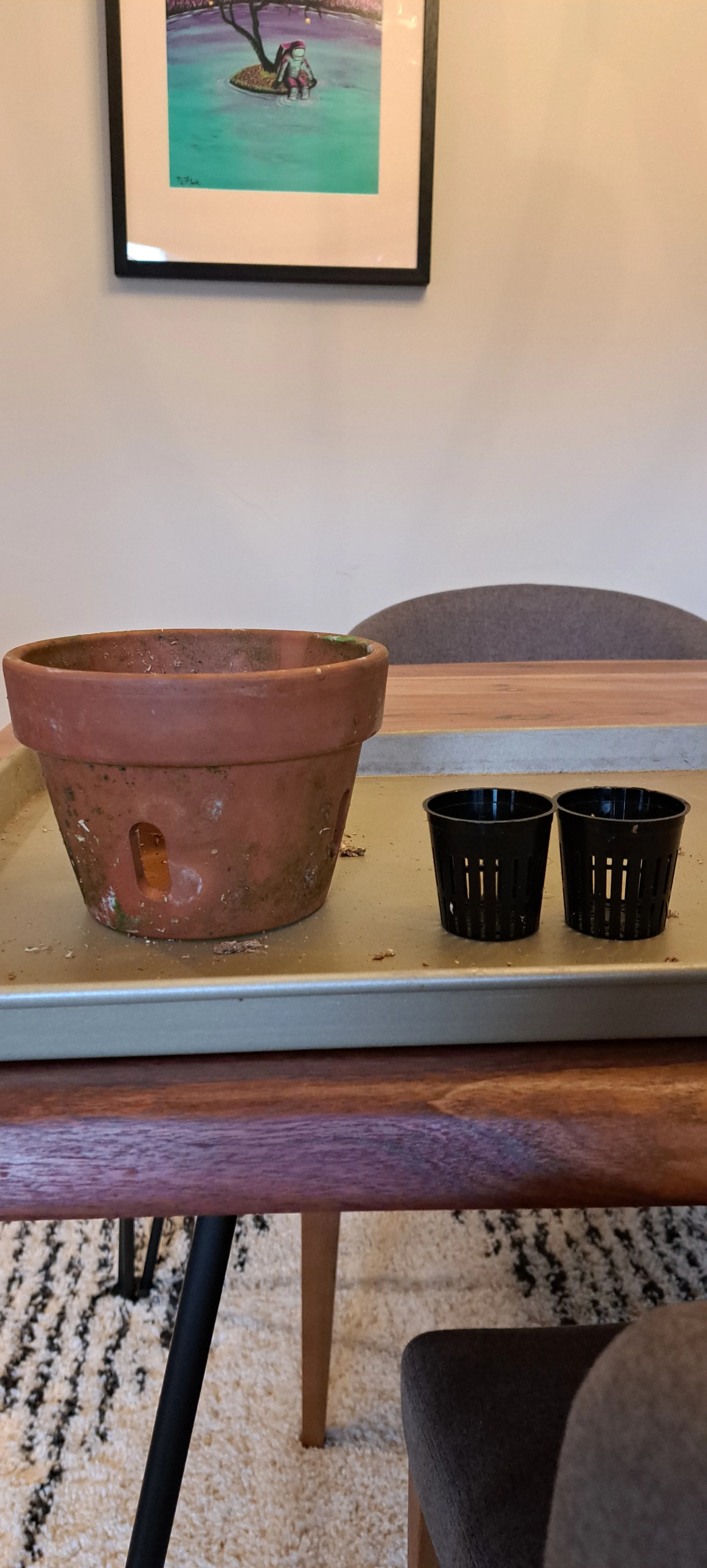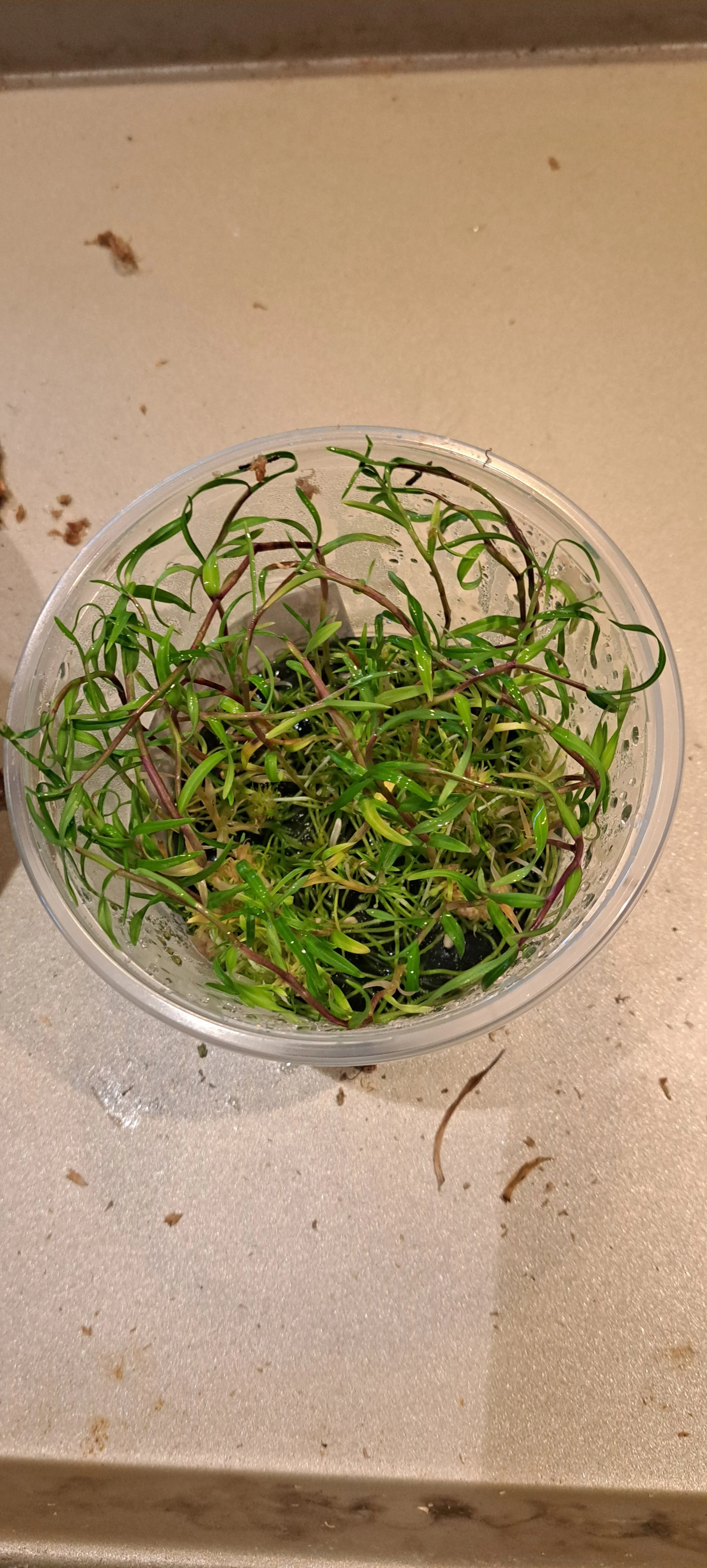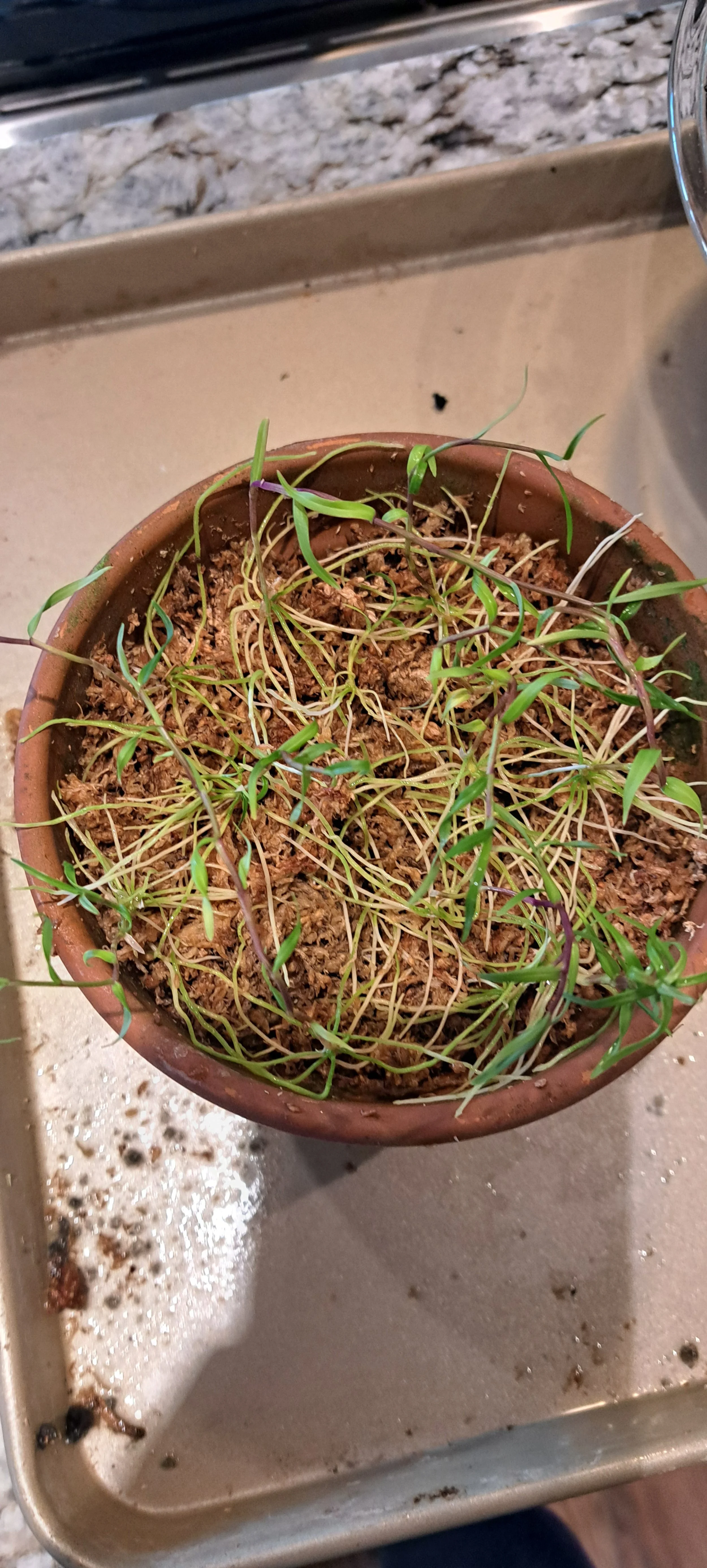Your Flask Has Arrived, Now What?
This blog post is here to guide anyone who might feel a bit intimidated by the flask they’ve just purchased, showing how to pot up those new plants and get them growing quickly and healthily.
We’ll recommend planting your seedlings in a “compot,” or community pot. Community pots offer several advantages:
Simplify watering
Maintain more stable conditions for seedlings
Improve humidity
Compots work by providing a spacious yet cozy environment. They create a broad planting area where seedlings are closely packed, but in a stable, shared space. With a wide (not deep—keep reading!) layer of planting media, compots help retain humidity, creating ideal conditions for growth..
Supplies
I recommend using terra cotta pots that are 8 inches or wider. For compots, width is more important than depth, as the bottom will be lined with the 2-inch net pots shown here.
An 8” terra cotta pot filled with 4 × 2” net pots
Media
I use long-fibered sphagnum moss, soaked in tap water until wet. This type of media can take a few days to fully absorb moisture, but a good 20-minute soak will make it damp enough to use for setting up your compot.
Simply place a layer of moss on top of the net pots; there’s no need to fill in the gaps. This moss pad, resting above the air pockets at the bottom of the pot, creates ideal conditions for your seedlings. They’ll get the airflow their roots need, along with access to moisture and humidity from the moss.
Deflasking
For most species (except smaller ones), a well-grown flask will show these signs:
The plants are well established and growing up against the lid.
The media is filled with healthy roots.
To remove the plants, gently lift them from the media—they should generally slip out, leaving the agar gel behind. Rinse any remaining gel from the roots using a gentle stream of water.
Planting
There are a few different techniques you can try. For species like the one shown here, I simply place each plant on top of the media, spacing them out evenly, and then cover the roots with a small layer of sphagnum.
With other species, you might gently wrap each plantlet’s roots with a strand of long-fibered moss.
Regardless of the method, it’s essential to ensure the seedlings have access to water—they’re more sensitive to drying out than mature plants. Aim to maintain even moisture and warm conditions as they adjust to life outside the flask.






